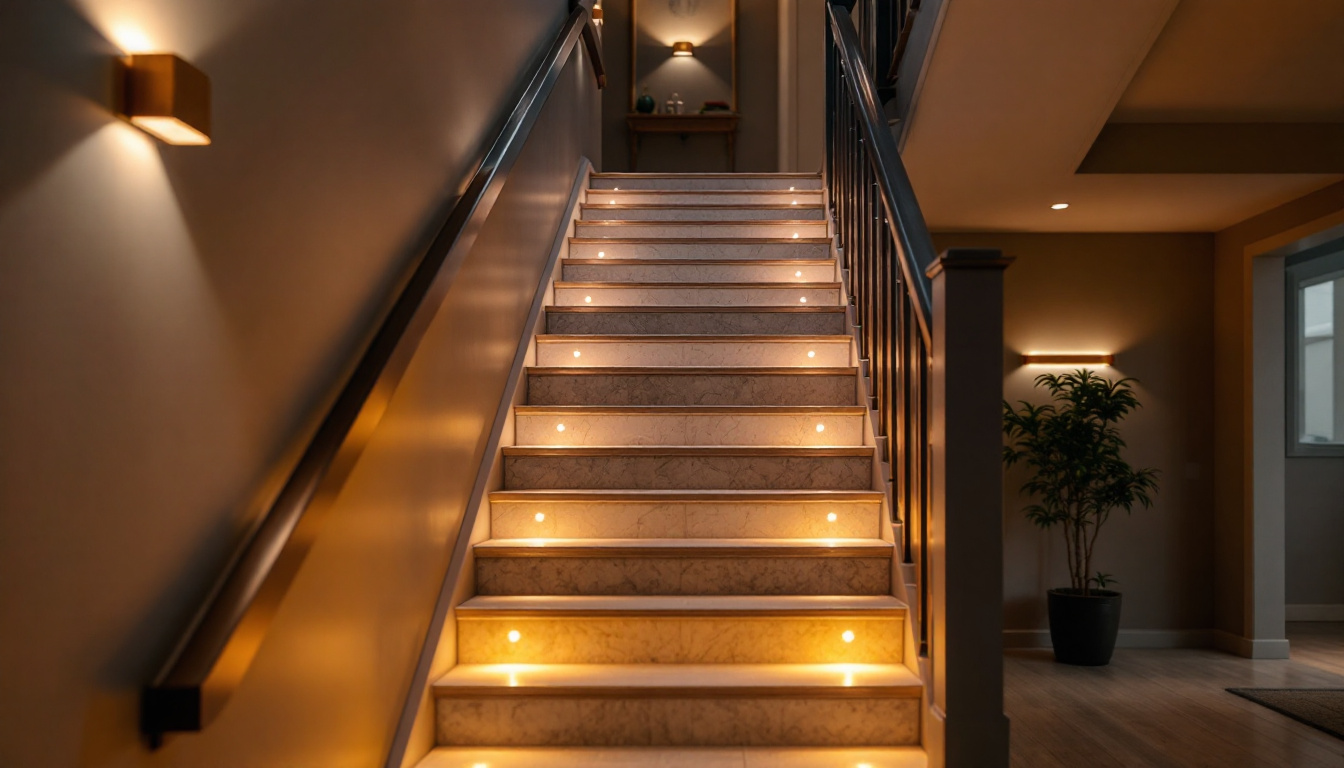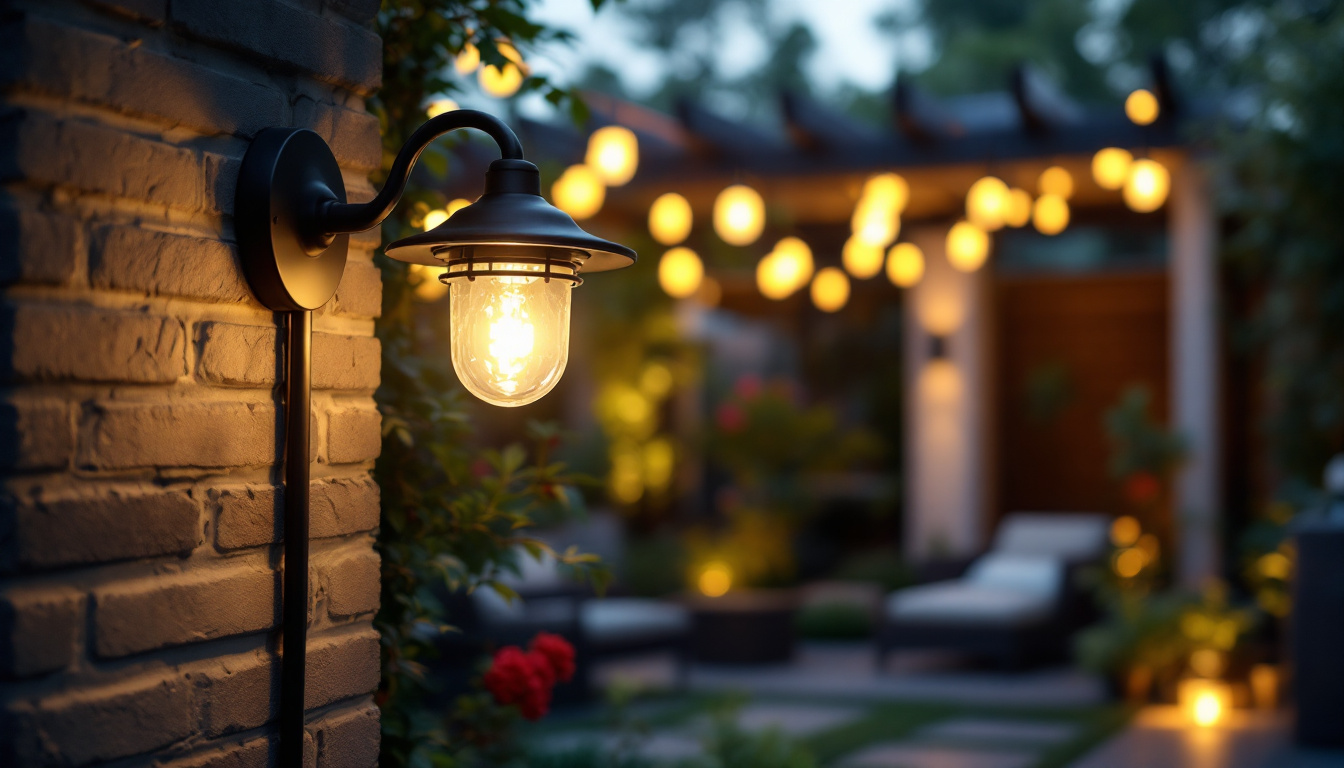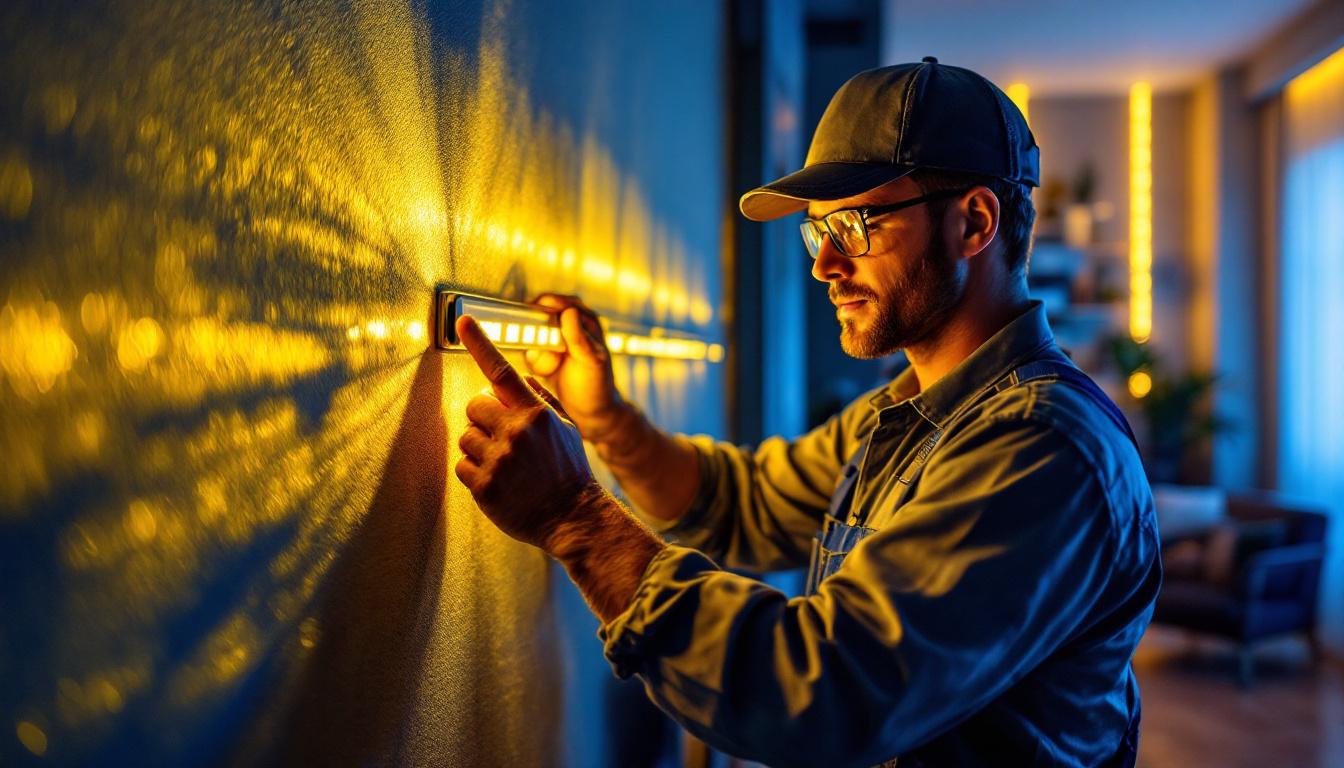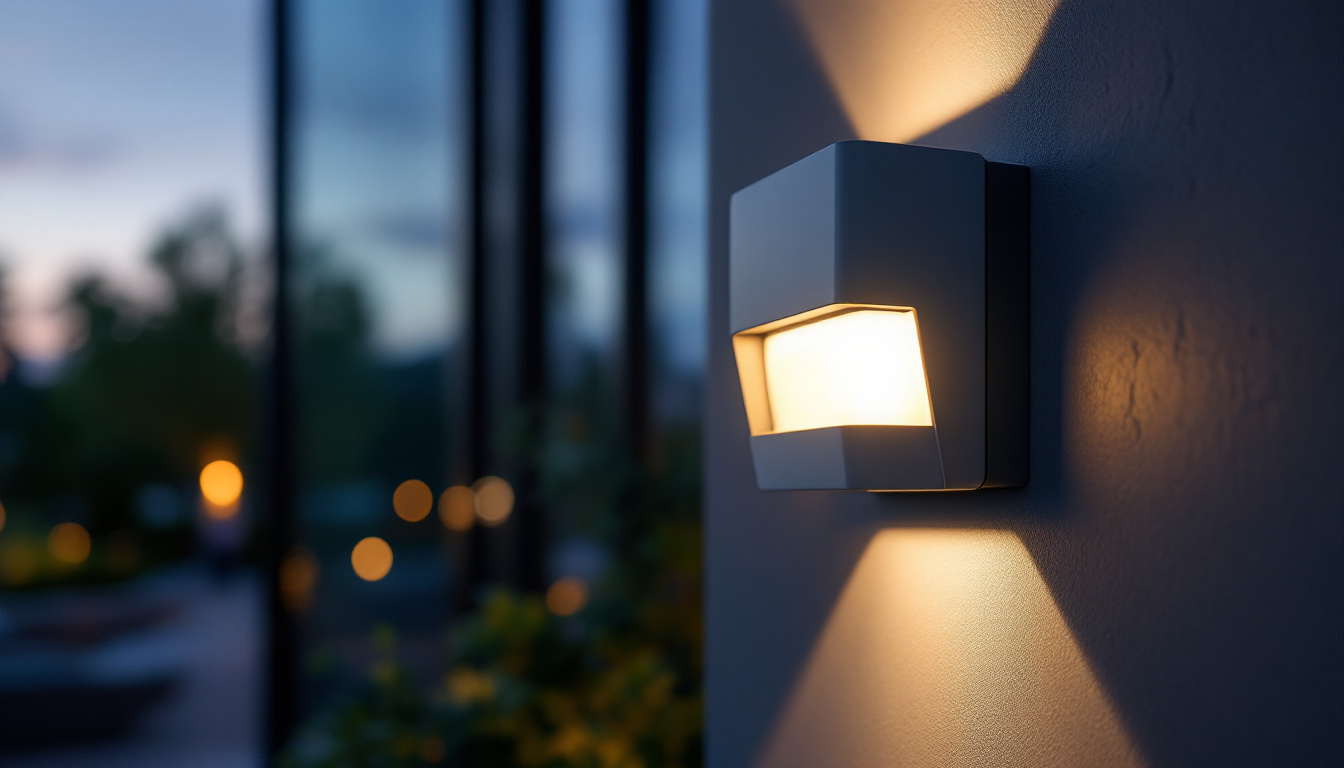
Lighting plays a crucial role in enhancing the safety and aesthetics of indoor staircases. For lighting contractors, understanding the nuances of stair lighting can significantly impact the quality of their work and the satisfaction of their clients. This article delves into proven methods for effectively illuminating indoor stairways, ensuring both functionality and style.
Indoor staircases are often overlooked when it comes to lighting design, yet they are essential for safety and accessibility. Poorly lit stairs can lead to accidents, making it imperative for lighting contractors to prioritize adequate illumination.
Moreover, well-designed stair lighting can enhance the architectural beauty of a home. It can highlight design features, create ambiance, and guide occupants safely from one level to another. Understanding the significance of stair lighting is the first step in delivering exceptional results to clients.
One of the primary reasons for installing effective stair lighting is safety. A well-lit staircase minimizes the risk of slips, trips, and falls. Lighting contractors should consider the placement of lights to eliminate shadows and ensure that each step is visible.
In addition to general illumination, it is essential to consider the color temperature of the lights. Warmer tones can create a welcoming atmosphere, while cooler tones may enhance visibility. Balancing these elements is crucial for creating a safe environment. Furthermore, incorporating motion sensors can provide an added layer of convenience and safety, automatically illuminating the stairs when someone approaches, thereby preventing any potential mishaps in low-light conditions.
Beyond safety, stair lighting serves an aesthetic purpose. It can accentuate architectural features, such as railings or wall textures. Lighting contractors should work closely with clients to understand their design preferences and suggest lighting solutions that complement the overall decor.
For instance, using recessed lighting can provide a sleek, modern look, while wall sconces may evoke a more traditional feel. The choice of fixtures and their placement can dramatically influence the staircase’s visual appeal. Additionally, integrating LED strip lights along the edges of the steps or under the handrails can create a stunning visual effect, enhancing the staircase’s design while providing necessary illumination. This not only adds a contemporary flair but also allows for creative expression, enabling homeowners to personalize their spaces in unique ways.
There are several effective lighting solutions for indoor staircases, each with its advantages and applications. Lighting contractors should be familiar with these options to provide tailored recommendations to their clients.
Recessed lighting is a popular choice for staircases due to its unobtrusive nature. Installed into the ceiling, these fixtures provide a clean look while offering ample illumination. Proper placement is key; lights should be positioned to cast even light across the steps.
When using recessed lighting, consider using dimmable options. This feature allows homeowners to adjust the brightness based on the time of day or occasion, enhancing the staircase’s versatility. Additionally, the use of LED bulbs in recessed fixtures can significantly reduce energy consumption while providing a long-lasting lighting solution. This not only benefits the environment but also helps homeowners save on electricity bills over time.
Wall sconces are another excellent option for stair lighting. They can be mounted on the walls adjacent to the stairs, providing both functional and decorative lighting. Sconces come in various styles, from modern to traditional, allowing contractors to match the fixtures with the home’s interior design.
In addition to aesthetics, wall sconces can help illuminate the vertical space of the staircase, creating a more open and inviting atmosphere. When selecting sconces, it is important to choose fixtures that provide sufficient light without being overly bright or harsh. Furthermore, incorporating smart lighting technology into wall sconces can enhance convenience, allowing homeowners to control the lights remotely or set schedules for automatic illumination, which is particularly useful during late-night hours.
Step lights are specifically designed to illuminate individual steps, enhancing safety by clearly marking each tread. These fixtures can be installed directly into the risers or as part of the handrail system. They are especially useful in homes with children or elderly occupants.
Step lights can also serve as a design element, with various styles and finishes available. When planning their installation, contractors should consider the overall lighting scheme to ensure consistency and harmony throughout the space. Additionally, the use of motion sensors in step lights can provide an added layer of convenience and safety, automatically turning on the lights as someone approaches the stairs. This feature not only enhances visibility but also helps to conserve energy by ensuring the lights are only on when needed.
Implementing advanced lighting control systems can elevate the functionality of stair lighting. These systems allow homeowners to customize their lighting experience, providing convenience and energy efficiency. With the right setup, stair lighting can transform a mundane passageway into a visually appealing and safe environment, enhancing the overall aesthetic of the home.
Dimmers are essential for creating the right ambiance in staircases. They allow users to adjust the brightness according to their needs, whether it be for a warm glow during a cozy evening or bright light for safety during nighttime navigation. The ability to fine-tune the lighting can also help in setting the mood for gatherings or quiet family moments, making staircases feel more integrated into the living space.
Timers can also be beneficial, automatically turning lights on and off at specified times. This feature not only enhances security but also conserves energy, making it an attractive option for environmentally conscious homeowners. Additionally, timers can be programmed to align with the natural light cycle, ensuring that stair lighting is only active when needed, further reducing energy consumption and costs.
Smart lighting systems have gained popularity in recent years, offering homeowners the ability to control their lighting via smartphones or voice commands. These systems can be programmed to adjust based on occupancy, time of day, or even the homeowner’s preferences. For instance, a smart system can detect when someone is approaching the stairs and automatically brighten the lights, providing a welcoming and safe environment.
For lighting contractors, integrating smart technology into stair lighting can be a selling point. It provides an opportunity to showcase innovative solutions that enhance convenience and modern living. Furthermore, many smart lighting solutions are compatible with home automation systems, allowing for seamless integration with other smart devices, such as security cameras and thermostats. This interconnectedness not only simplifies the user experience but also adds a layer of sophistication to the home, appealing to tech-savvy consumers looking for the latest in home improvement trends.
Proper installation is critical to the success of any stair lighting project. Lighting contractors should adhere to best practices to ensure safety, functionality, and aesthetic appeal.
Before beginning installation, it is essential to assess the space thoroughly. This includes evaluating the staircase’s layout, the surrounding decor, and the existing electrical infrastructure. Understanding these elements will inform the choice of fixtures and their placement.
Contractors should also consider the height of the ceiling and the width of the staircase. These factors will influence the type and number of fixtures needed to achieve optimal illumination. Additionally, it is important to take into account the color scheme of the walls and flooring, as these can affect how light is reflected and absorbed within the space. A well-lit staircase not only enhances safety but also serves as a design element that can complement the overall aesthetic of the home.
Strategically placing fixtures is vital for effective stair lighting. Recessed lights should be spaced evenly to provide uniform illumination, while wall sconces should be positioned at eye level for maximum impact.
Step lights should be installed at a height that is easily visible without being distracting. Contractors should also ensure that the lights do not create glare or shadows, which can compromise safety. Furthermore, considering the use of dimmable fixtures can add versatility to the lighting scheme, allowing homeowners to adjust brightness levels based on the time of day or occasion. Incorporating smart lighting technology can also enhance the functionality of stair lighting, enabling users to control the lights remotely or set them to respond to motion, adding an extra layer of convenience and security.
Once the stair lighting is installed, ongoing maintenance is essential to ensure its longevity and effectiveness. Lighting contractors should educate clients on proper care and maintenance practices.
Dust and dirt can accumulate on light fixtures, diminishing their brightness and overall effectiveness. Regular cleaning of fixtures, especially those installed in high-traffic areas, will help maintain optimal performance.
Contractors can recommend specific cleaning products or methods that are safe for the materials used in the fixtures. This guidance can enhance client satisfaction and prolong the life of the lighting system.
As with any lighting system, bulbs will eventually need replacement. Contractors should inform clients about the types of bulbs used and their expected lifespan. This knowledge empowers homeowners to plan for replacements proactively.
Additionally, discussing energy-efficient options, such as LED bulbs, can help clients reduce energy costs while maintaining excellent lighting quality.
Indoor stair lighting is a vital aspect of any home, contributing to both safety and design. For lighting contractors, mastering the various methods and solutions for stair illumination can lead to successful projects and satisfied clients.
By understanding the importance of stair lighting, exploring different types of fixtures, implementing advanced control systems, and adhering to best installation practices, contractors can elevate their work and provide exceptional value. With proper maintenance and attention to detail, the stair lighting systems installed will not only enhance safety but also add a touch of elegance to the home.
Ready to take your stair lighting projects to the next level? At LumenWholesale, we provide lighting contractors with the high-quality, spec-grade lighting products you need at prices that can’t be beaten. Say goodbye to local distributor markups and hello to our extensive selection that meets the highest industry standards. Plus, with free shipping on bulk orders, you can stock up on premium lighting solutions without worrying about hidden fees. Elevate your installations with the perfect blend of quality, affordability, and convenience at LumenWholesale – Wholesale Lighting at the Best Value.

Discover how lighting contractors can enhance efficiency and client satisfaction with innovative outdoor lighting fixtures.

Discover the best places to purchase LED light strips and explore how lighting contractors can leverage these versatile lighting solutions to enhance their projects.

Discover the essential insights lighting contractors need to meet client expectations in warehouse projects.

Discover how Wallpack is revolutionizing the lighting industry with innovative designs and cutting-edge technology.